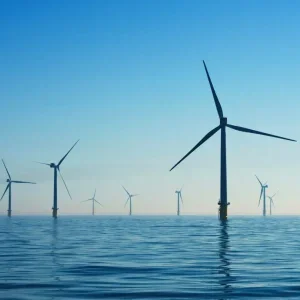Greenpeace has reported the existence of a giant coal mine that it says is illegally encroaching on a nature reserve at the source of the 5464 km Yellow River, the second longest waterway in China, and is endangering the country’s water supply system. The situation has been brought to light by a Greenpeace investigation published by Energydesk on 7 August.
The mining operation, which covers an area of 15 square miles at an altitude of over 4000m, has been documented in detail in a series of photographs taken by undercover campaigners from Greenpeace’s Beijing office. The industrial site spans an entire coal industry chain, from huge opencast mines to the highest coking plant in the world.
By combining evidence gathered on seven separate trips to the remote region with satellite images and analysis by legal experts, Greenpeace campaigners have established that the coal development, run by a group of private companies, violates a number of water protection laws and nature reserve regulations.
Its location right at the heart of the Qinghai-Tibet plateau – known as China’s "water tower" for being the birthplace of some of the country’s major rivers – will raise fresh concerns about the impact of coal mining on the country’s water resources.
The mining operation, first started in 2003, has destroyed the alpine meadows linking the glaciers on the Qinghai Mountains to the plateau, cutting off the channel feeding rainfall and melt water to the rivers.
This investigation is the latest in a series of reports by Greenpeace East Asia that it says exposes the huge strain the coal industry is putting on the country’s water resources. Greenpeace research suggests that government plans to boost coal production by building 16 coal industry hubs will lead to 10 billion cubic metres of water being consumed yearly, abou one sixth of the Yellow River’s annual flow.
The study also estimates that in 2015 the water demand of coal developments in Inner Mongolia, Shaanxi, Shanxi and Ningxia will either severely challenge or exceed the supply capacity of industrial water for these areas.
Earlier this year the Shenhua Group, a state-owned company and the world’s biggest coal producer by volume, announced it would stop exploiting groundwater for their coal-to-liquid project in Inner Mongolia following a Greenpeace investigation revealing the impact of its operations on an area already struggling with severe water shortages.
Commenting on the investigation’s findings, Li Shuo, Greenpeace East Asia Climate and Energy Campaigner, said:
"This huge coal mine dug into the birthplace of China’s mother river is arguably the most shocking example of the threat coal poses to the country’s water supply.
"China’s growing hunger for coal is not only fuelling the cycle of air pollution crises plaguing the country’s largest cities, it’s also using up enormous amounts of water, threatening whole regions with water shortages and desertification.
"The Beijing authorities have shown a strong determination in tackling the smog emergency triggered by coal fumes – now they need to display the same resolve in protecting the country’s water reserves."






